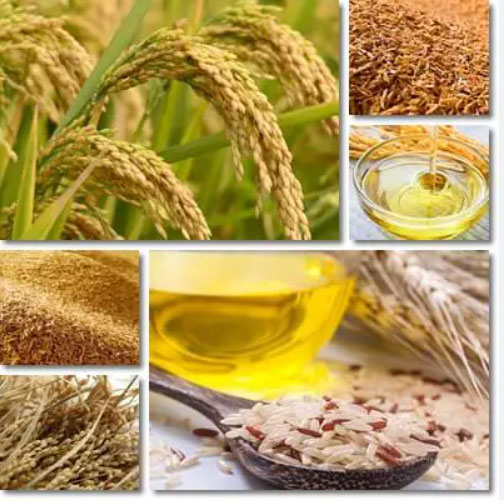
Refining Process
Recent Technological Developments: Importance of Refining Process for Higher Retention of Micronutrients.
Rice bran oil can be refined by the chemical process as well as by physical process. In the chemical refining process about 80% oryzanol gets destroyed during caustic neutralization of free fatty acids. But in the physical refining process, the free fatty acid is distilled off with steam under high vacuum without using caustic, thereby retaining about 5 times higher oryzanol than chemically refined rice bran oil. Central Food Technological Research Institute, Mysore has confirmed in a study that physically refined rice bran oil is more enriched in beneficial micronutrients and natural antioxidants and has one and a half times oxidative stability than chemically refined rice bran oil.
| Beneficial Micronutrient Level in Chemically and Physically Refined Rice Bran Oil | ||
|---|---|---|
| Characteristics | Chemically Refined | Physically Refined |
| Oryzanol (%) | 0.20 | 1.06 |
| Phytosterols (%) | 0.96 | 1.40 |
| 4 Methyl Sterols (%) | 0.51 | 1.12 |
| Triterpene Alcohols (%) | 0.52 | 0.86 |
| Squalene and Tocopherols (%) | 0.61 | 1.13 |

Hypocholestrolemic effect of physically refined rice bran oil has been studied vis-a-vis chemically refined rice bran oil and groundnut oil by the Central Food Technological Research Institute, Mysore. Serum Lipid Levels in rats fed with diet containing 10% groundnut oil, chemically refined rice bran oil and physically refined rice bran oil were reported as under : -
| Parameters mg/100 ml | Groundnut Oil (Control) | Chemically Refined Rice Bran Oil | Physically Refined Rice Bran Oil |
|---|---|---|---|
| HDL cholesterol (Good cholesterol) | 33.8 ± 6.69 | 38.58 ± 7.14 | 50.57 ± 3.57 |
| LDL+VLDL (Bad cholesterol) | 23.48 ± 8.51 | 26.73 ± 7.71 | 26.73 ± 7.71 |
| Triglycerides | 272.8 ± 59.7 | 140.4 ± 51.5 | 118.7 ± 34.55 |
Therefore, physically refined rice bran oil was found to be more effective in increasing good HDL and reducing bad LDL cholesterol and triglycerides.